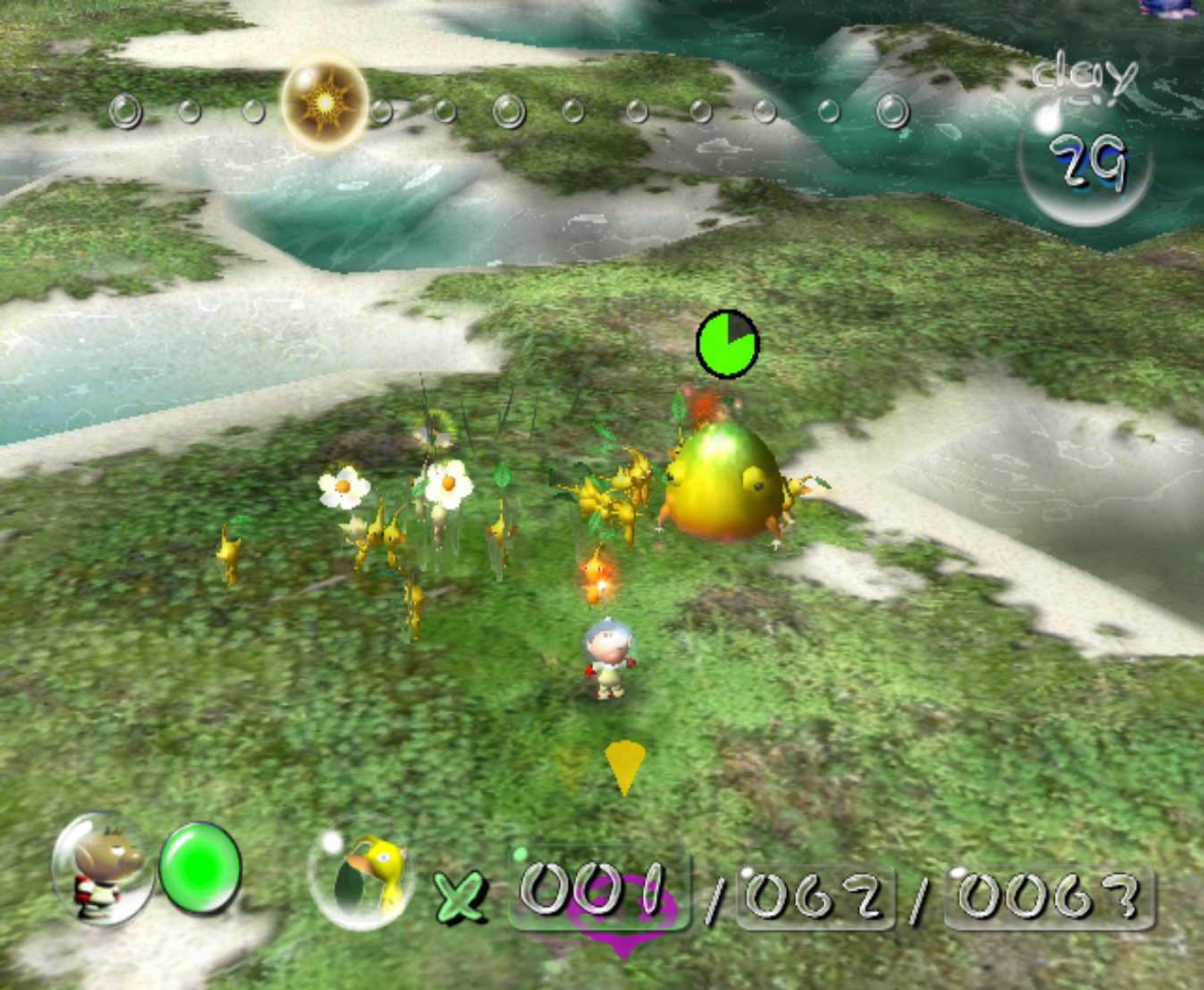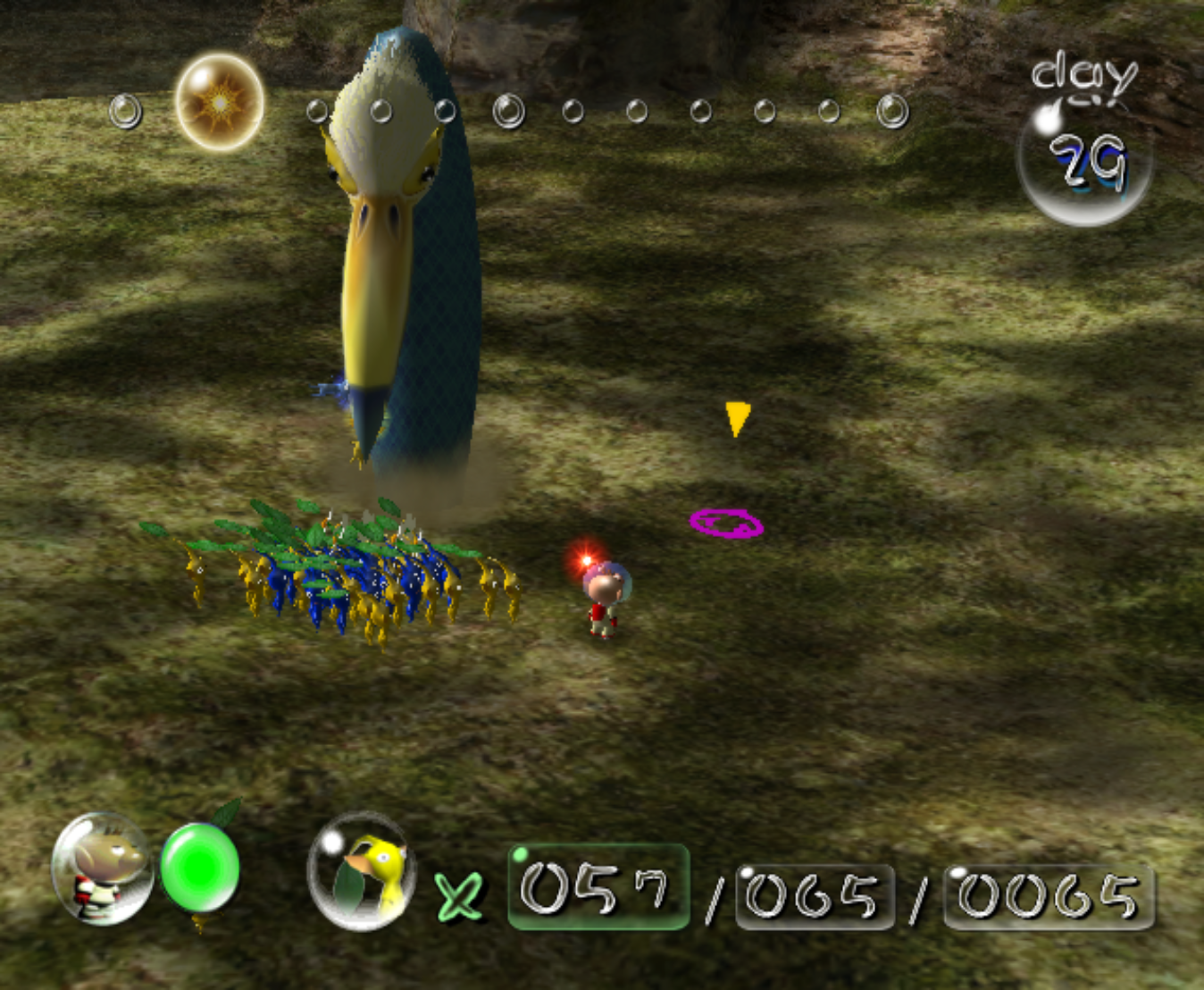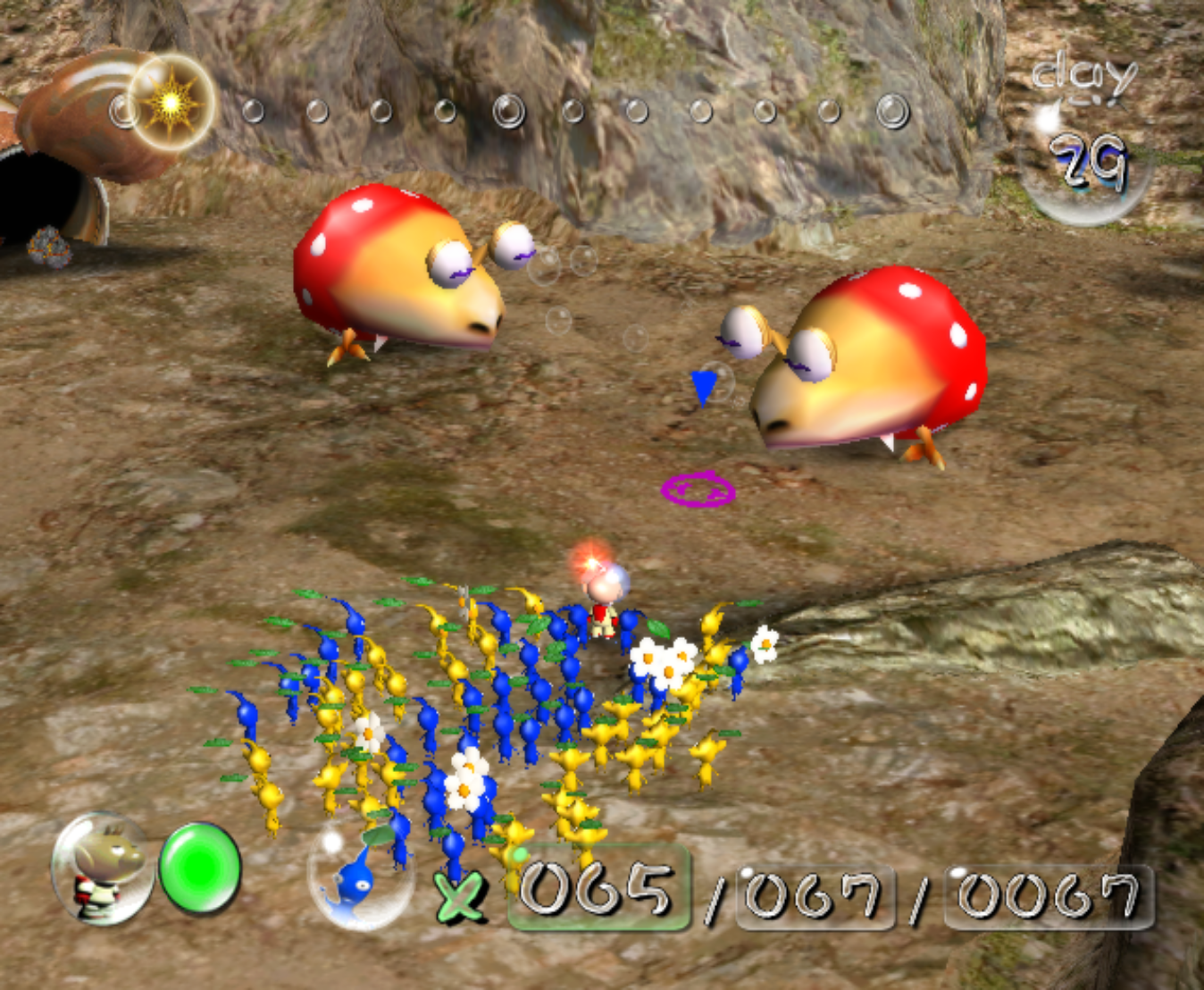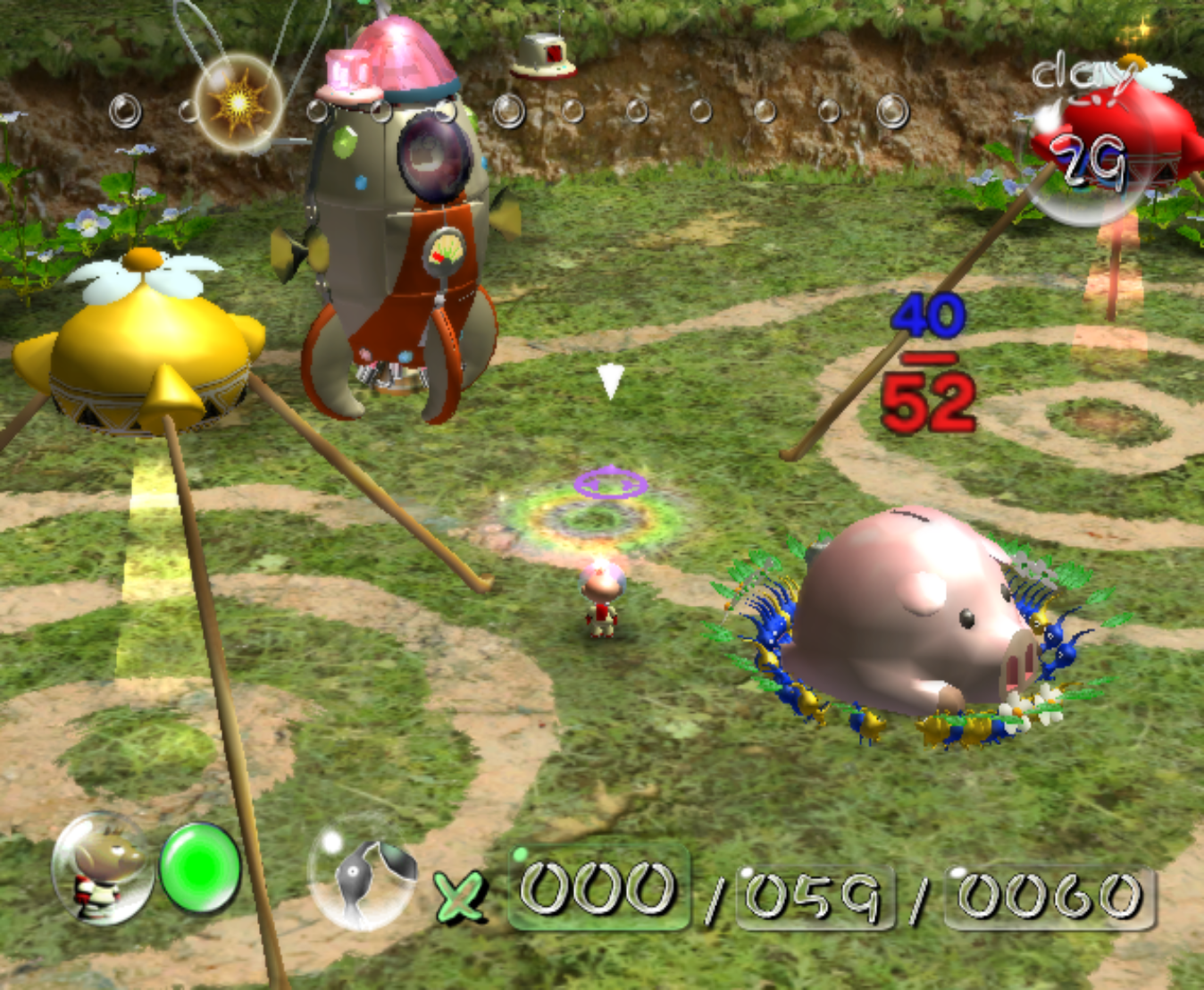Review: Pikmin 1
by Moises Espinal
With the fairly recent release of Pikmin 4, it was time to look back at the start of the series and see what the magic was about with this real-time strategy game that made it so beloved and successful. Originally released in 2001, Pikmin 1 helped make the RTS genre more accessible as it transitioned to 3D and it was probably Nintendo fans' first exposure to this style of game. Most people that have played the original Pikimin game look back at it fondly and it was my turn to understand what all the hype was about. Also probably important to mention, that this review is of the original GameCube game. Some things mentioned might not apply as much in the more modern versions.
Enjoyability: 11/12
Pikmin is a game where true enjoyment comes from the satisfaction of beating a certain enemy type or setting up the foundation that will enable the player to get as many possible parts in a day. At least, that was the case for my experience where beating a Wollywog and clearing the way for the next group of Pikmin (despite losing a couple dozen in just that one battle) meant a victory for Olimar. The time limit system with the day gradually passing made the game extra enjoyable. The uncertainty of how much you can accomplish before the day ends while exploring an unknown section of the map makes those small successes of getting a ship part feel that much more impactful. What the game does very well is having 3 main distinct areas that you can travel between depending on how many parts you've gathered. Each area feels very different with challenging enemies and environments that never have the same solution besides bringing a small militia of Pikmin in case things get dangerous. The most fun I had playing this game came from overcoming setbacks after losing several dozen Pikmin either in battle or an accidental drowning in water. It really makes you think about how to use your limited numbers to achieve the most success which was a lot of fun day in and day out.

Gameplay: 11/12
The gameplay of Pikmin seems simple when you first land at The Impact Site where you first discover Red Pikmin, leading them to produce as many more Pikmin as possible on your first day by carrying different items back to their Onion. But once you hit the second area, The Forest of Hope, all of my hope started to dwindle as all the Red Pikmin I was leading were either eaten up by enemies or led to water where I found out the hard way that they do not make it out. There I learned the value of keeping Pikmin safe and making sure to experiment, but not with all 60 of my Pikmin. Once you overcome the trial and error of each little section of the map, it feels like a real accomplishment that opens up the zone for the next objective. Now, onto the controls which I would say are my biggest gripe with the game. These are controls that definitely show the age of the original Pikmin due to it feeling very difficult to control the Pikmin in certain moments. Taking a large group of different colored Pikmin was a task in of itself with the player needing to alternate between dismissing all your current Pikmin, trying to inconsistently whistle the group/numbers you need, and then dismissing them again to bring the group left behind to achieve whatever objective took so much effort in the first place. Even when leading the exact group you want, players only have minor control over where the Pikmin move using the C-stick (or whatever the equivalent is on different controllers). It just doesn't confirm that members of the party won't get stuck on a wall or stay behind doing some task that wasn't intended.

Atmosphere: 10/12
In a world full of games where you're powerful, or at least capable, right from the start, Pikmin manages to convey the world as something much larger and much more dangerous than anything players are used to. Olimar cannot succeed without his Pikmin and every loss can lead to a setback that wastes precious time as lost numbers need to eventually be recovered. Every enemy is at least Olimar's size and they all pack triple the punch (Olimar does practically 0 damage to all relevant enemies). I felt the most amount of anxiety early on in the Forest of Hope where around every corner there seemed to be a Bulborb. At that point in the game, I wasn't sure how to defeat them without losing several Pikmin and there were always two close together. I really felt the tension and the map forces you to encounter these things, making the risk vs reward thought process that much more interesting. The Forest Navel is another great area that comes to mind. It is darker and more dangerous than any of the other sections and it makes you use everything you've learned in order to get all the ship parts in the area. I also appreciated how it got darker when it was time to go back to your ship, making it more difficult to see when searching for those few lost Pikmin. The music unfortunately did absolutely nothing for me. In fact, in certain sections it even took away from my appreciation of what was going on. The Forest of Hope does get a special shoutout for being the best map track in the game, but I was left wanting more when it came to the music.

Design: 11/12
Each little section of the game is designed to be a completely different environment with different enemies and honestly Pikmin does a pretty great job with variety between all areas. No two sections really ever require the same strategy on a map except for the early Forest of Hope since it is the beginner stage after all. The Distant Spring also has an overreliance on Blue Pikmin to collect a lot of the ship parts just from the sheer nature of the terrain. Every time I felt that Yellow Pikmin were under-utilized, a super high ledge or a bombable wall would show up that would necessitate their use. Players always have to be on their toes to adapt on the fly to puzzles on the map that haven't been discovered yet and each area makes sure to never make you feel comfortable overrelying on a certain color of Pikmin. Each area progressively makes use of Pikmin in varied ways that improve on the basics of what players learned earlier through different enemies and the "optimization" of growing more Pikmin. Things certainly won't be perfect on a first playthrough, but the 30-day time limit means there's only time to plan ahead. There's no room for regrets.

Direction: 9/12
Does losing 60 Red Pikmin in water on Day 2 of 30, right after the basic tutorial, decrease motivation tremendously? Possibly. What I'm trying to get at is that Pikmin 1 has a habit of letting players experiment first, then providing crucial information later. It's up to the player to determine if they appreciate that or not. Personally, I thought that learning an enemy's weakness through trial and error wasn't particularly fun, but it fit the narrative of you and Olimar experiencing these alien foes for the first time. However, each time that I lost a majority of my Pikmin or even just straight up died to these unexplained obstacles, it felt extremely discouraging. This is especially the case when it comes to the unique enemies that sometimes randomly appear. It feels as though the player gets punished for not expecting whatever new mechanic a boss enemy introduces. In terms of actually moving around and making progress, the radar that shows a map of the different ship parts is a very welcome inclusion. It makes the thought process behind where on the map to tackle not completely overwhelming, making everything seem more doable. It's very useful for strategizing how to potentially get multiple ship parts on one day. Once you get past that early game lack of knowledge, Pikmin 1 becomes a test of efficiency that feels very rewarding. The game's puzzles do a great job of making you think in ways that are different and usually satisfying. Making it out in under 30 days genuinely feels like a major accomplishment, but the game won't help you any step of the way.